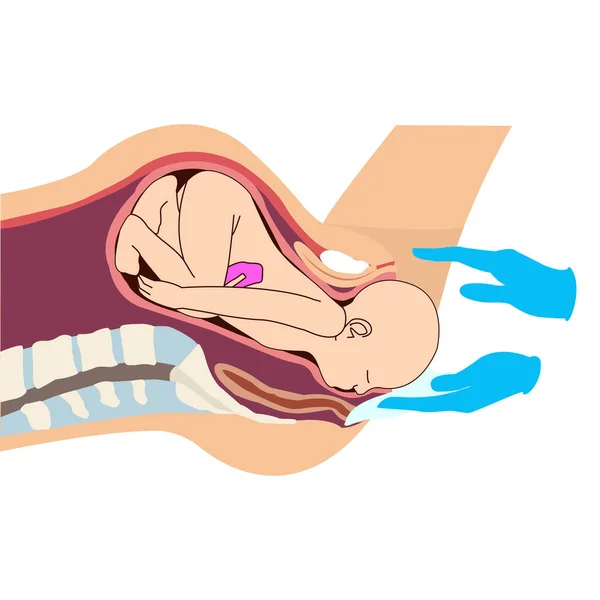Back
How to Prepare my Pelvic Floor for a Vaginal Delivery
By Shannon Strauch, PTA, STMT-1 on 3/13/2024

Pelvic floor therapy, also known as pelvic floor physical therapy, is a specialized form of physical therapy that focuses on the muscles, ligaments, and connective tissues of the pelvic floor. When preparing for childbirth, pelvic floor therapy can play a crucial role in helping to optimize pelvic floor function, alleviate discomfort, and reduce the risk of complications during a vaginal delivery. Here's what typically happens in pelvic floor therapy when preparing to give birth:
Assessment
: The first step in pelvic floor therapy is typically an assessment by a trained physical therapist specializing in pelvic floor issues. During this assessment, the therapist will evaluate the strength, flexibility, and coordination of the pelvic floor muscles. They may also assess for any signs of dysfunction, such as pelvic pain, urinary or fecal incontinence, or pelvic organ prolapse.Education
: Pelvic floor therapy often involves education about the anatomy and function of the pelvic floor muscles, as well as how they relate to childbirth. The therapist may provide information about proper body mechanics, breathing techniques, and strategies for optimizing pelvic floor function during labor and delivery.Exercise Prescription
: Based on the assessment findings, the therapist will develop an individualized exercise program to target specific weaknesses or imbalances in the pelvic floor muscles. This may include exercises to improve strength, flexibility, coordination, and endurance of the pelvic floor muscles. Kegel exercises are commonly prescribed, but other exercises such as squats, lunges, and bridges may also be included.Manual Therapy
: Pelvic floor therapy may involve hands-on techniques performed by the therapist to release tension, improve mobility, and restore optimal function to the pelvic floor muscles and surrounding tissues. This may include techniques such as myofascial release, trigger point therapy, and soft tissue mobilization.Biofeedback
: Some pelvic floor therapists use biofeedback techniques to help patients learn how to properly contract and relax the pelvic floor muscles. Biofeedback involves using electronic sensors to monitor muscle activity and provide visual or auditory feedback to the patient, helping them to better understand and control their pelvic floor muscles.Behavioral Modification
: In addition to exercises and manual therapy, pelvic floor therapy may involve behavioral modifications to address habits or lifestyle factors that may contribute to pelvic floor dysfunction. This may include recommendations for improving posture, bladder and bowel habits, and stress management techniques.Preparation for Labor and Delivery
: As childbirth approaches, pelvic floor therapy may focus on preparing the pelvic floor muscles and tissues for the demands of labor and delivery. This may include practicing relaxation techniques, learning positions for labor that optimize pelvic floor function, and addressing any specific concerns or questions the patient may have about childbirth.
Overall, pelvic floor therapy aims to empower patients with the knowledge, skills, and tools they need to optimize pelvic floor health and function throughout pregnancy, childbirth, and beyond. By addressing any pelvic floor issues early in pregnancy and preparing the muscles for the demands of labor and delivery, pelvic floor therapy can help improve outcomes for both mother and baby.
Preparing the pelvic floor for vaginal delivery involves a combination of exercises, lifestyle adjustments, and education. Here are some steps you can take to prepare:
Kegel Exercises
: Kegel exercises target the muscles of the pelvic floor, which can help improve their strength and flexibility. To do Kegels, contract the muscles you would use to stop the flow of urine, hold for a few seconds, then release. Repeat this several times throughout the day.Perineal Massage
: Perineal massage involves gently stretching and massaging the tissues around the vagina to increase flexibility and reduce the risk of tearing during delivery. You can start perineal massage around 34 weeks of pregnancy. Use a lubricant and insert one or two fingers about an inch into the vagina, then gently massage the lower part of the vagina in a U-shaped motion for a few minutes each day.Pelvic Floor Exercises
: In addition to Kegels, there are other exercises that can help strengthen the pelvic floor, such as squats, lunges, and bridges. These exercises can help improve overall pelvic muscle tone and stability.Proper Body Mechanics
: Learning how to maintain good posture and body mechanics can help reduce strain on the pelvic floor muscles during pregnancy and delivery. Avoid heavy lifting, and when lifting objects, bend at the knees and keep your back straight.Stay Active
: Regular physical activity, such as walking or swimming, can help keep the pelvic floor muscles toned and flexible. However, be sure to consult with your healthcare provider before starting any new exercise routine during pregnancy.Educate Yourself
: Attend childbirth education classes to learn about the stages of labor, breathing techniques, and positions that can help facilitate vaginal delivery. Knowledge and preparation can help reduce anxiety and improve confidence during labor and delivery.Maintain a Healthy Weight
: Excess weight can put additional strain on the pelvic floor muscles. Eating a balanced diet and staying within the recommended weight gain guidelines for pregnancy can help support pelvic floor health.Practice Relaxation Techniques
: Stress and tension can contribute to pelvic floor dysfunction. Practicing relaxation techniques such as deep breathing, meditation, or prenatal yoga can help keep the pelvic floor muscles relaxed and flexible.
Read More:
How Chronic Pelvic Congestion in Men Contributes to Prostatitis By Shannon Strauch, PTA, STMT-1 on 12/11/2024 How lymphatic issues can cause symptoms of prostatitis Prostatitis and Tight Pelvic Floor Muscles: A Comprehensive Guide By Shannon Strauch, PTA, STMT-1 on 12/10/2024 How a tight pelvic floor can be the reason for prostatitis symptoms
Are you ready to live pain free?
Request An Appointment